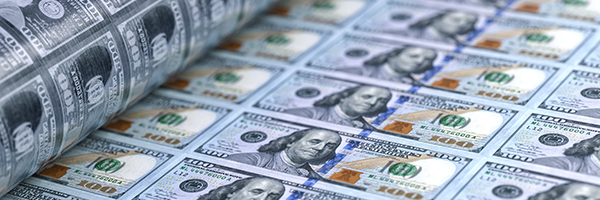On Wednesday the Federal Reserve will update its projections for GDP growth, inflation, and the timing of any interest rate increase.
In December, Fed officials, on the famous (or infamous) dot plot indicated that that central bank officials expected to hold benchmark interest rates in the current 0% to 0.25% range through the end of 2023.
In the months since that projection from the Fed the market has been pricing in a different scenario, one that sees a tightening in interest rates from the Fed at the end of 2022. In other words roughly a year earlier than the Fed’s projected schedule last December.
The market’s schedule is based on the results of an accelerated rate of vaccinations further opening the economy and the effect of $1.9 trillion in stimulus/relief. The options market is betting that the yield on the 10-year Treasury will be as high as 1.85% in the next few months from 1.60% today, March 16. And, Wall Street says, 1.85% won’t be the end of the upward move in yields.
So what happens if the Fed’s projections on Wednesday stick close to what the Fed projected in December.
One possibility is that the markets will radically reprice bonds upward (with yields falling) to match the Fed’s guidance.
That’s possible. But in the last couple of weeks that outcome has become increasingly unlikely. You see Wall Street has decided that it can’t trust Fed chair Jerome Powell. It’s not a consensus–yet–but the view seems to be growing among professional money managers that Powell is in denial about the magnitude of the inflation risk posed by the end of the pandemic shutdowns and that $1.9 trillion in stimulus. (With more to come quite possibly from the Democrats infrastructure effort.)
Powell hasn’t explicitly contested the market’s view and in the absence of that pushback (although it’s not clear that he’d win the argument) the market has been moving to price in its own views on yields and inflation. The eurodollar contract, one indicator of market expectations on yield and interest rates has climbed to reflect a quarter-point increase by March 2023. Some prices suggest an even earlier tightening. Eurodollar prices reflect a tightening of about 18 basis points by December 2022. That’s indicative of a 75% chance of an increase in interest rates.
One popular options bet right now sees yields rising to 1.70% to $1.85% before the current options contract expires in May. In the selloff in 10-year Treasuries last week, open interest, a measure of existing positions, showed that traders were putting on new shorts on the price of Treasury bonds.
Here’s how to track Wednesday’s dot plot. Back in December only five Fed officials said they saw an interest rate increase in 2023. To move the Fed forecast to show one interest rate increase in 2023, four Fed officials would have to move their expectations for the timing of an interest rate increase.


